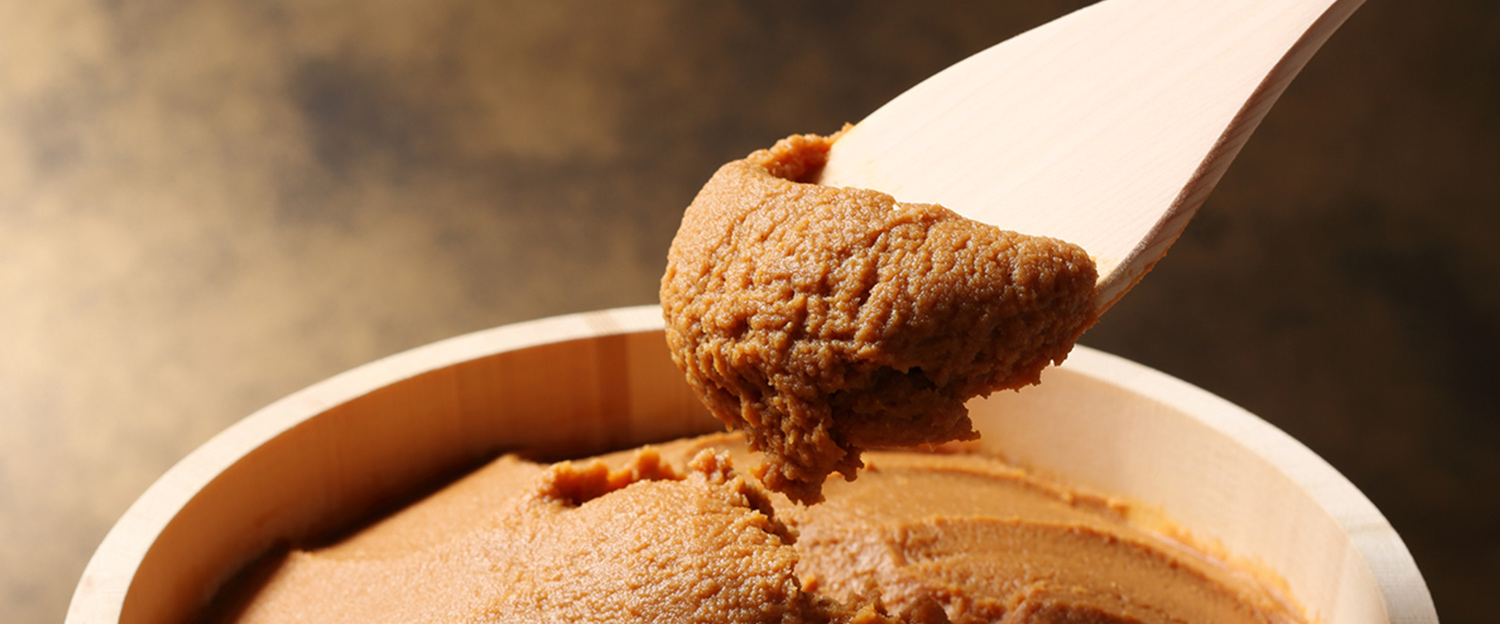


Miso is a traditional food that has supported
the dietary life of the Japanese people
for more than 1,300 years.
While it is a basic seasoning that represents Japan,
it is also a fermented food created by the activity of microorganisms.
Miso has been part of the history of the Japanese people for more than 1,300 years.
Miso is an indispensable seasoning for the Japanese. It is also known as a nutrition-rich soybean fermented food.
Let's take a look at its history, and see how miso has supported the health of the Japanese people.
It is thought that miso originated as a fermented food in ancient China. It is most likely that it was introduced to Japan via mainland China and the Korean Peninsula in the Asuka period during the 7th Century.
The characters for "miso" first appeared in literature during the Heian period.
Miso was not used as a food seasoning as it is today. It was spread on food, or directly licked and eaten. It was also used to pay the salaries of the elite and as a gift. It was a valuable commodity that did not reach the mouths of the common people.
Buddhist monks who came to Japan from China during the Kamakura period brought suribachi mortars with them. With these mortars, grain could be easily ground and could easily dissolve in water. This was how miso started to be used in miso soup. The emergence of miso soup is said to have shaped the basic meal menu, often called "Ichi-ju-ichi-sai" (a one-soup, one side dish menu consisting of a staple, soup, main dish, and pickles), of the samurai warriors during the Kamakura period. This menu originally focused on simplicity and frugality, but in modern times, it has been gaining popularity as a balanced meal.
Production of soybeans increased during the Muromachi period, and farmers started making their own miso. Even common people began using miso as a preserved food. Miso cooking seen today was created during this period.
The Sengoku samurai warriors always took miso with them when they headed into the battlefield. In those days, miso was used as a seasoning, as well as a valuable source of protein. It could be preserved and easily carried around in a dried or grilled state. Shingen Takeda promoted the production of "Shinshu Miso", Hideyoshi Toyotomi and Ieyasu Tokugawa promoted "Soybean Miso", and Masamune Date promoted "Sendai Miso".
When the population of Edo reached 500,000 people, production of miso could not keep up with demand. Miso from the countryside, such as Mikawa and Sendai, was sent to Edo and miso shops flourished. Since there were more men than women living in Edo, many restaurants opened, with dishes using miso developing at the same time. Commoners started eating miso soup, and miso paste became a familiar food.
Over time, miso containers evolved from large casks to cups that can be easily stored in the refrigerator.
Miso with dashi stock, which eliminated the need to prepare dashi stock, was introduced during the Showa period, and was a great aid in helping women who were moving ahead in society.